Dunlop Traction
The main use of Dunlop's traction is in the maintenance of reduction
in supracondyar fractures of the humerus in children.
Dunlop Traction
- Supracondyar fractures in children
- Allows swollen elbow to settle
- Contraindicated in open fractures and skin defects
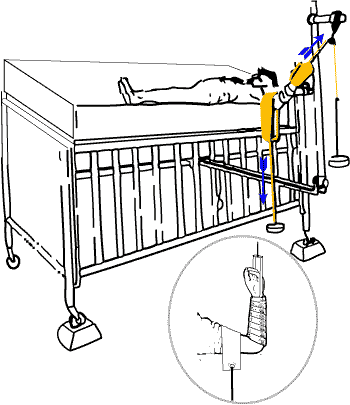
Skin traction is placed on the forearm and A special frame used on the
side of the bed.
Traction is placed along the axis of the forearm as well as at right angles
to the humerus by means of a broad sling placed around the upper arm.
Bed blocks are required on the lateral side (fracture side up) of the
bed.
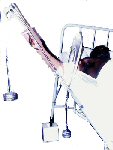
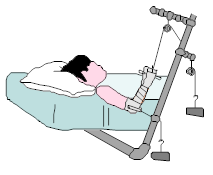 If a supracondyar fracture cannot be reduced to over 90 degrees elbow
flexion, this method of traction is an alternative to invasive methods
such as a percutaneous K-wires. It allows swelling to subside. Do
not rely on this method to reduce a supra condylar fracture, a manipulation
will still be required!
If a supracondyar fracture cannot be reduced to over 90 degrees elbow
flexion, this method of traction is an alternative to invasive methods
such as a percutaneous K-wires. It allows swelling to subside. Do
not rely on this method to reduce a supra condylar fracture, a manipulation
will still be required!
Pelvic traction for Backache
In sciatica and other backaches relief from pain can be obtained by means
of pelvic traction. Traction is applied to a pelvic harness with weights
over the end of the bed.

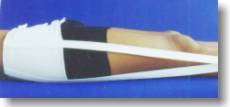
An alternative in Sciatica is the 90-90
position. By means of cushions under the knees, the hips are flexed near
90 degrees, as well as the knees. This shortens the sciatic nerve and
relieves pain.
Acetabular Traction
In conservative treatment of acetabular fractures longitudinal traction
in the long axis of the limb is often used. In addition the head of
the femur can be disimpacted from the acetetabulum ( central fracture
dislocations) by means of manipulation under anesthesia. The reduction
is maintained by means of lateral traction from pins paced in intertrochanteric
region.
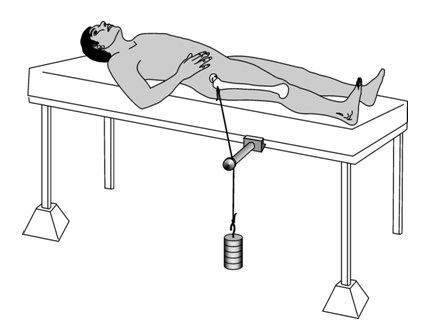 |
Lateral Traction for an
acetabular fracture |
<< Go Home
|